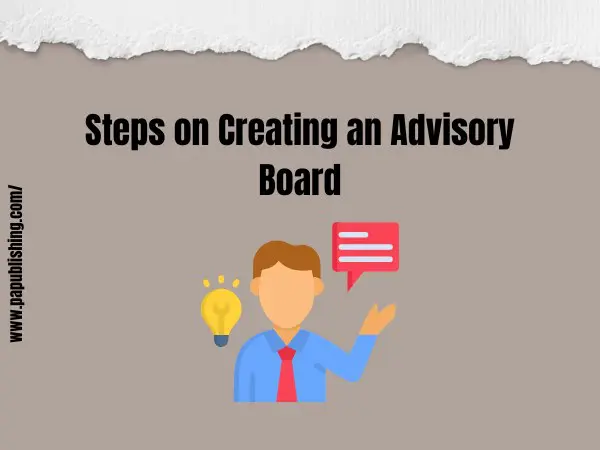4 Steps on Creating an Advisory Board
Creating an advisory board can be a major game-changer for your business. Large companies and small startup businesses alike can significantly benefit from professional counsel on matters beyond their expertise. However, the advisory board you create should align with your business goals and needs. You should be very particular about how it’s created and who it consists of.
That’s why, in this article, we’ve provided a step-by-step guide on creating an advisory board that’s tailored to your business operations.
What is an Advisory Board?
An advisory board is a group of experts who provide advice to companies about their business operations and practices. However, unlike a board of directors, advisory board members don’t have legal responsibility over the company. Instead, they only offer strategic guidance on navigating complex challenges.
Advisory boards also typically contain members who are experts in their respective industries. This means that with their knowledge, you’ll receive valuable skills and experience in specific areas of your business.
Steps on Creating an Advisory Board
Did you know that 1 in 4 U.S. businesses fail within their first year of operation? The only way you can avoid a similar fate is by creating an advisory board that can provide you with valuable guidance. So, if you want to know how to create an advisory board, follow the given steps:
Step 1: Define Your Goals
The first step is to identify what your business goals are and how an advisory board can solve them for you. For this step, you can try conducting a SWOT analysis, as it’ll break down those goals into specific achievable objectives. It’ll also help uncover where your business lacks and what’s needed to overcome it.
After defining all these goals and challenges, building your board will be much easier. You’ll be able to choose advisors whose expertise aligns with your objectives and address specific issues.
Step 2: Identify the Skills and Expertise Needed
Once you’ve identified your goals, the next step is to determine the expertise required to achieve them. Advisors typically specialize in areas like finance, business strategy, social media marketing, etc. It’s your job to identify where your business lacks and identify the expertise needed to fill in the gaps.
Also, remember to hire advisors from different fields and levels of expertise. Having a combination of experts will cover all areas of your business and provide greater insight into addressing specific challenges.
Step 3: Select the Right Members
When choosing between potential board members, there’s more to look out for than just the necessary expertise. They should be evaluated based on various other factors as well, like their track record, level of industry knowledge, individual experience, etc. It’s also important that whoever you hire is capable of collaborating and fostering relationships with other existing members.
Additionally, you want to avoid having too many advisors working for you. Try to focus on creating a small, well-curated group of advisors to prevent conflicting opinions in the future.
Step 4: Establish a Structure
Another step to creating an advisory board is establishing a concise structure of how it operates. Start by informing your advisors of the goals and expectations regarding their roles. This will straighten out the scope of their involvement and prevent any future disagreements.
Additionally, you’ll need to facilitate frequent communication between board members and managers. This involves scheduling meetings quarterly, monthly, or based on business requirements. You must also decide how feedback will be delivered and how the company will act on their advice.
Conclusion
Creating an advisory board can significantly improve your business’s strategic capabilities. However, to create an advisory board tailored to your business, you must follow a set of steps. Start with defining your business goals, then identify the skills needed to achieve them. Next, you must select the right members to take up the board and provide them with a structure of operations to follow.





